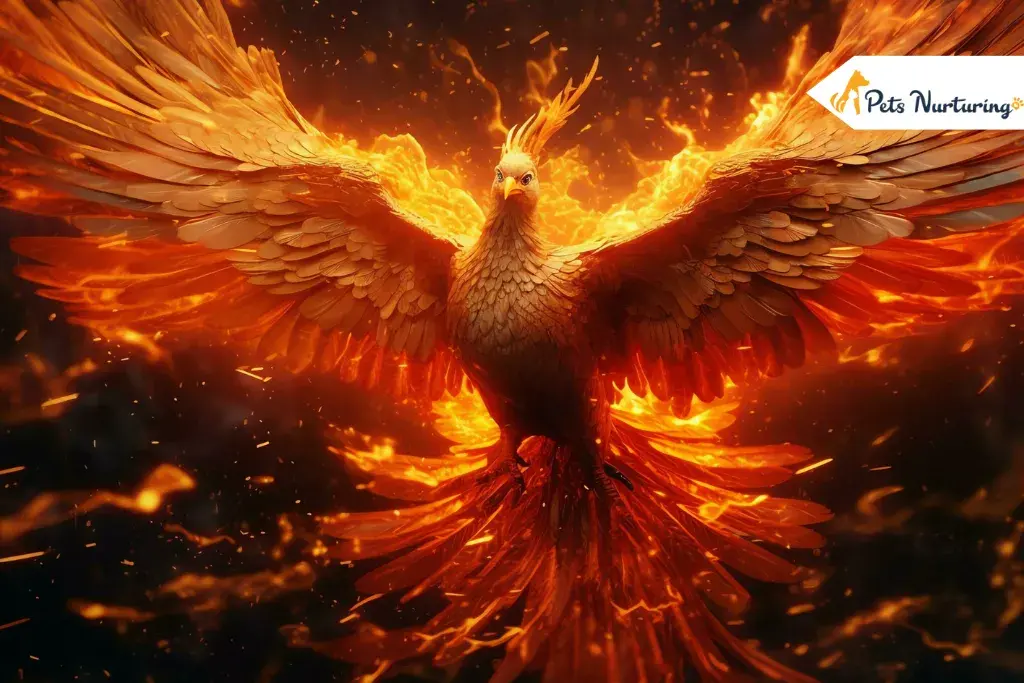
If you’re into mythological creatures and animals, you’ll surely have heard about the phoenix!
Phoenix is an ancient mythological bird that is widely popular among many religions and cultures around the world. It is said that it burns into flames when it dies and is again reborn as a phoenix from its ashes. This means it is an immortal creature living for many, many years!
It is said that a phoenix lives around 500 to 1000 years in each life. Not only this but there are many other fascinating facts about this magical bird that intrigue many people today. Some said they had seen real phoenix birds deep in the forest or mountains, and some did not. Today, it is one of the biggest mysteries about mythical birds!
So, have you also wondered about Is a phoenix a real bird or what a phoenix looks like?
If you want to know the answers to your questions, keep reading!
Today in this post, we’re going to tell you everything about the phoenix bird. From the phoenix bird real or not, to the appearance of a phoenix bird in real life, we’ve included many things.
So, let’s get an answer is phoenix real or not?
- What is a Phoenix?
- History & Story of Phoenix
- What Does The Phoenix Symbolize?
- Etymology of the Name Phoenix
- Phoenix Mythology
- 1. Phoenix in Greek Mythology – The Phoenix
- 2. Phoenix in Egyptian Mythology – Bennu
- 3. Phoenix in Native American Mythology – Thunderbird
- 4. Phoenix in Persian Mythology – Simurgh & Huma
- 5. Phoenix in Jewish Mythology – Milcham
- 6. Phoenix in Hindu Mythology – Garuda
- 7. Phoenix in Slavic Mythology – Firebird
- 8. Phoenix in Ancient Rome Mythology
- 9. Phoenix in Japanese Mythology – Ho-Oo (Hou-Ou)
- 10. Phoenix in Chinese Mythology – Feng Huang
- Phoenix in Popular Books
- Fascinating Facts About Phoenix
What is a Phoenix?
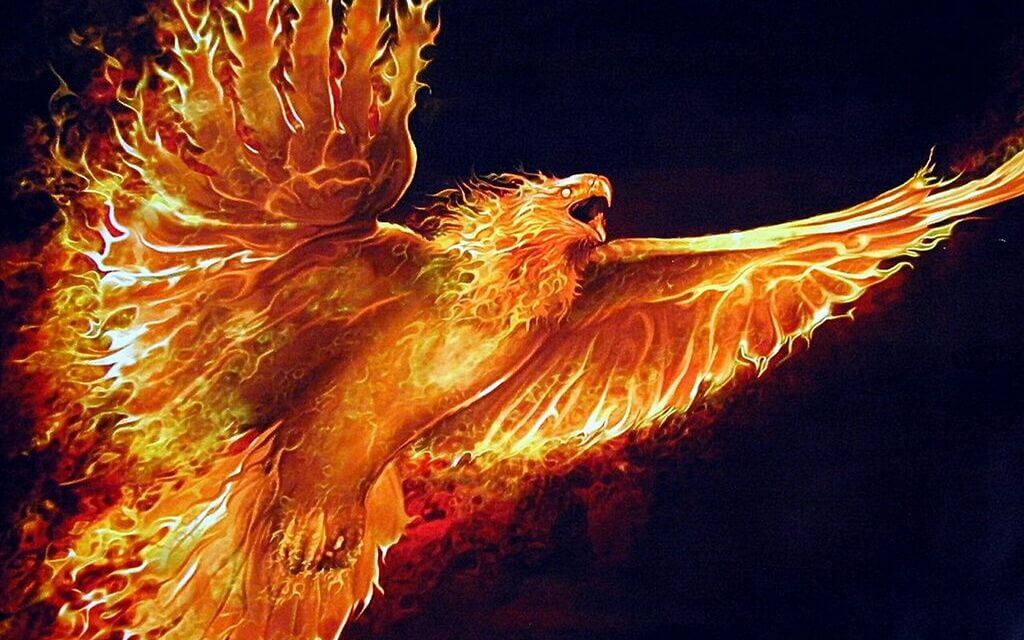
In the above phoenix bird real photo, you see a large unique bird that resembles an eagle, peacock, or crane, with a crimson-red breast and flame-colored purple, rich red, and gold feathers. This mythological bird originated in the Middle East or ancient Egypt. It is said that it lived for more than five centuries in the Arabian desert, that’s why it is also known as the Arabian bird.
This bird is described in many religions and cultures, including Greek, Roman, Hindu, and Egyptian, with different names and appearances, but they all relate to each other. Phoenix also has a long tail and a crest of silver and blue feathers on its head.
History & Story of Phoenix
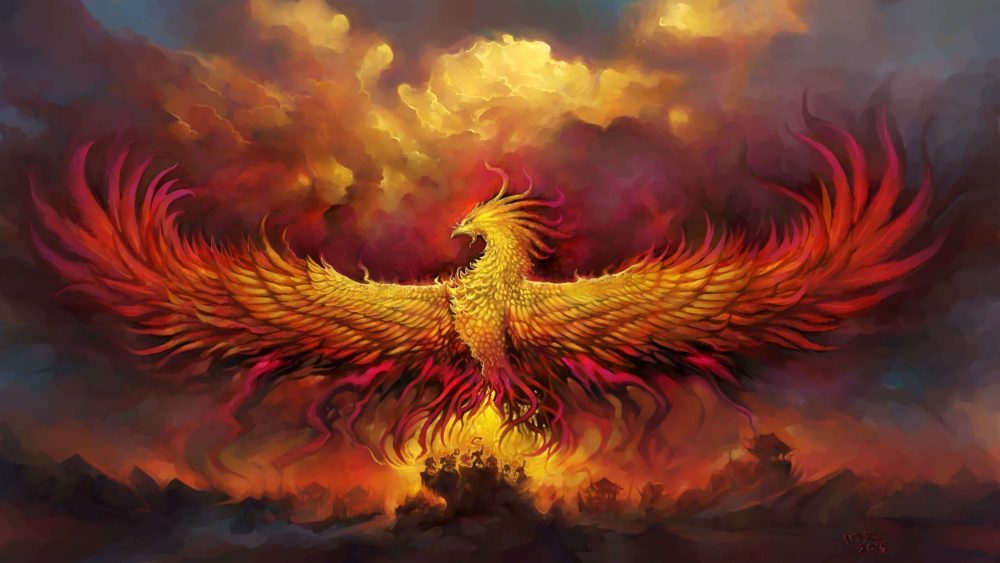
As described, this legendary bird is a super bird that can live for 500 years. And when he is about to die, he makes a nest for himself with special aromatic plants, such as frankincense, myrrh, sage, cassia, and cinnamon. After this, the phoenix strikes his beak against a rock, resulting in sparks and fire. Then the bird will set his nest and himself on fire while flapping his wings like a bellows.
This isn’t it! The real magic begins when the phoenix completely burns himself to ashes; again, he is born in the same nest. That’s why the saying is, “The phoenix rises from the ashes.”
After this, the special bird will slowly collect all the remaining ashes and roll them into an egg wrapped in the aromatic plant, myrrh. Later the phoenix flies to Heliopolis, Egypt, to deliver this egg to the Temple of the Sun in honor of the Solar God known as Ra. It is said that the phoenix has many magical powers. One of them is to heal any wound or anything from his tears. Also, these birds’ ashes can bring the dead to life.
What Does The Phoenix Symbolize?

Different cultures and regions and people describe phoenix in their own words, and that’s why it symbolizes many things. The phoenix bird has the attractiveness of the peacock and braveness like an eagle; that’s why it also symbolizes beauty and strength. It is also associated with renewal and resurrection.
People get inspiration from various stories and artworks, some of which are date back to 1500 BC.
The real phoenix bird can symbolize:
- Rebirth
- Time
- Metempsychosis
- Renewal
- Sun
- Immortality
- Healing
- God
- Resurrection
- The empire
- Life in the heavenly paradise
- The Eternal Fire
Etymology of the Name Phoenix
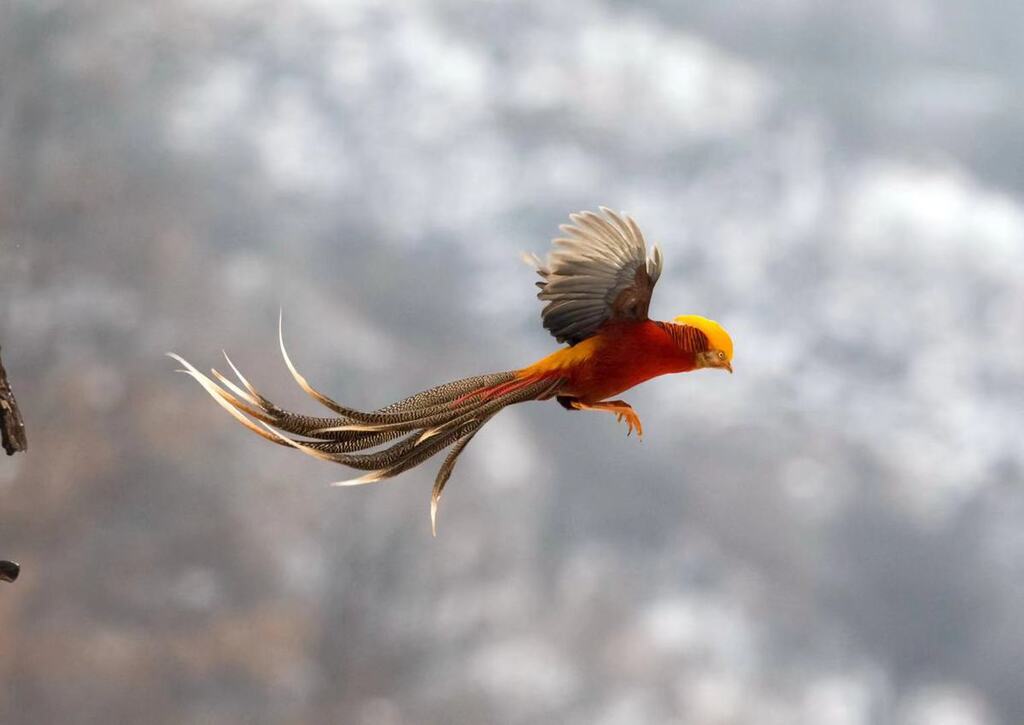
According to some Etymologists, the phoenix is named after the Phoenicians, who were the ancient people of the Mediterranean. On the other hand in Greek, the word ‘phoenix’ refers to a purple-red color. Phoenicians were also widely famous for creating a coveted purple-red dye. So, people believed that the phoenix bird is connected to the dye, which beautifully describes the colorful feathers.
Phoenix Mythology
There are not one or two but many cultures in which a mystical and mythological bird is described as a phoenix. So, there are chances that they all are talking about one bird or maybe a completely different one.
However, according to historians, the real phoenix bird was inspired by the mythical Persian bird called the Simurgh, an Egyptian avian deity known as Bennu. So, the origins of this mysterious bird still remain mysterious.
Here are some of the stories from different cultures talking about this mythological bird:
1. Phoenix in Greek Mythology – The Phoenix

The Greek version of the real phoenix bird is commonly heard of. However, another reason is that the description of the phoenix bird in Greek is very similar to that of ancient Egypt.
Some people believe that the bird originated in ancient Egypt while some believe that the Greek has the real version of the real phoenix bird. In Greek, it is described as the phoenix reborn from its ashes.
2. Phoenix in Egyptian Mythology – Bennu

Bennu is an Egyptian God that looks similar to a heron and has features similar to the phoenix described in Greek culture. The only difference is that the deity Bennu goes through the rebirth process every 500 years.
Some people also believed that Bennu was the symbol of the ancient God Osiris. Just like ancient Egyptians, Bennu lived on top of an obelisk, and people worshipped him just like a god.
In ancient Egypt, this bird is also the symbol of the fertility of the land and wealth. That’s why it is also an essential part of Egyptian culture.
In the 5th century BC, the Greek historian and writer Herodotus visited Egypt. He learns about the phoenix-like bird from the Egyptians. He described his experience as, “There is also another sacred bird called the phoenix, which I did not myself see except in painting, for in truth he comes to them very rarely, at intervals, as the people of Heliopolis say, of five hundred years.”
3. Phoenix in Native American Mythology – Thunderbird
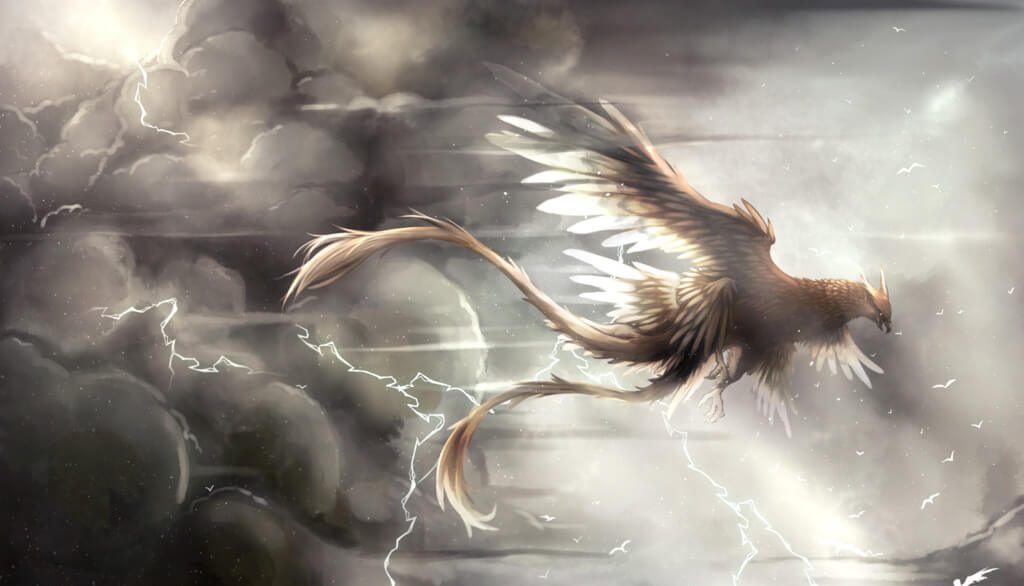
In American mythology, the phoenix is known as the Thunderbird. The native Americans described this bird as the giant bird that protects them from the evil serpent figure.
4. Phoenix in Persian Mythology – Simurgh & Huma
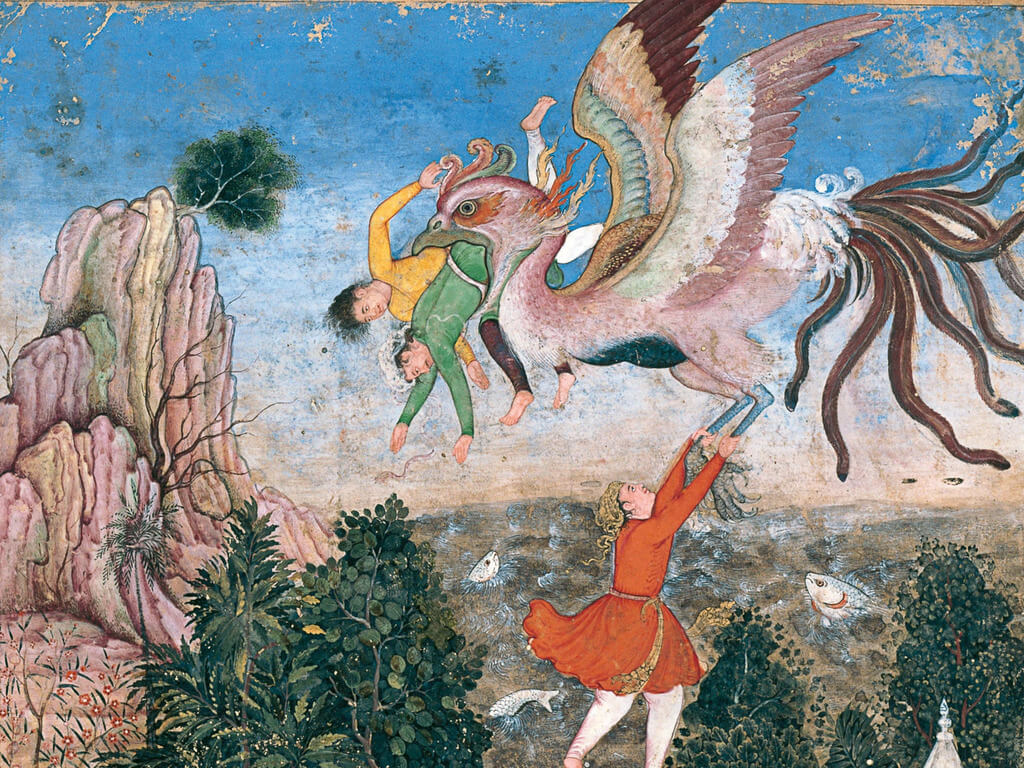
Persian mythology mentions two birds that look like the real phoenix bird. The first one is the Simurgh which is so massive in size that it can easily carry a whale or an elephant. Persian legends described this bird as pretty similar to a peacock but having a dog’s head and lion’s claws.
There is also a myth that this bird, Simurgh, is very intelligent and possesses universal wisdom. Like the hawk, Simurgh is also considered the messenger between the earth and the sky. People also believed that this bird purifies the land and water.
Another bird was the mythical Persian bird known as Huma. This bird has phoenix-like qualities and many magical powers, such as it has never touched the ground. Huma is also known as the bird of paradise.
5. Phoenix in Jewish Mythology – Milcham
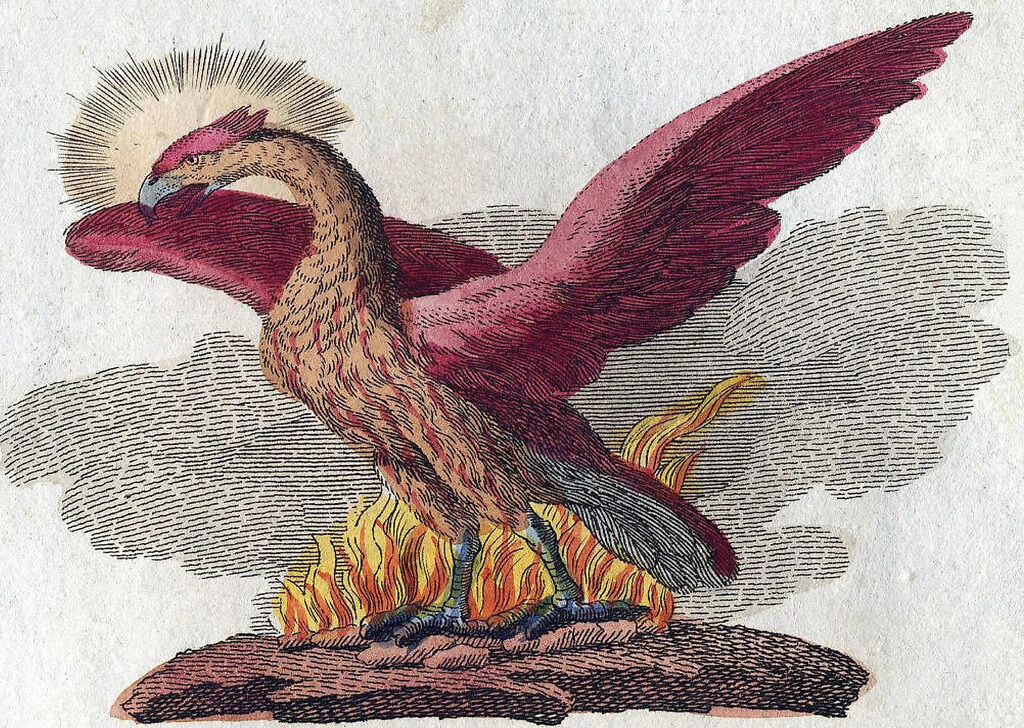
Milcham is another mythical bird described in Jewish mythology, said to have lived in the Garden of Eden. The story of this bird states that when Eve saw the fruit, she first offered it to the animals in the garden.
Many animals consume it, but Milcham and some other creatures refuse to consume the fruit. So in reward, these animals get the reward of faithfulness, and they can live for eternity. Also, the story states that God gives the bird power to become immune to the touch of the Angel of Death. For Milcham, the rebirth cycle is about every 1000 years.
6. Phoenix in Hindu Mythology – Garuda
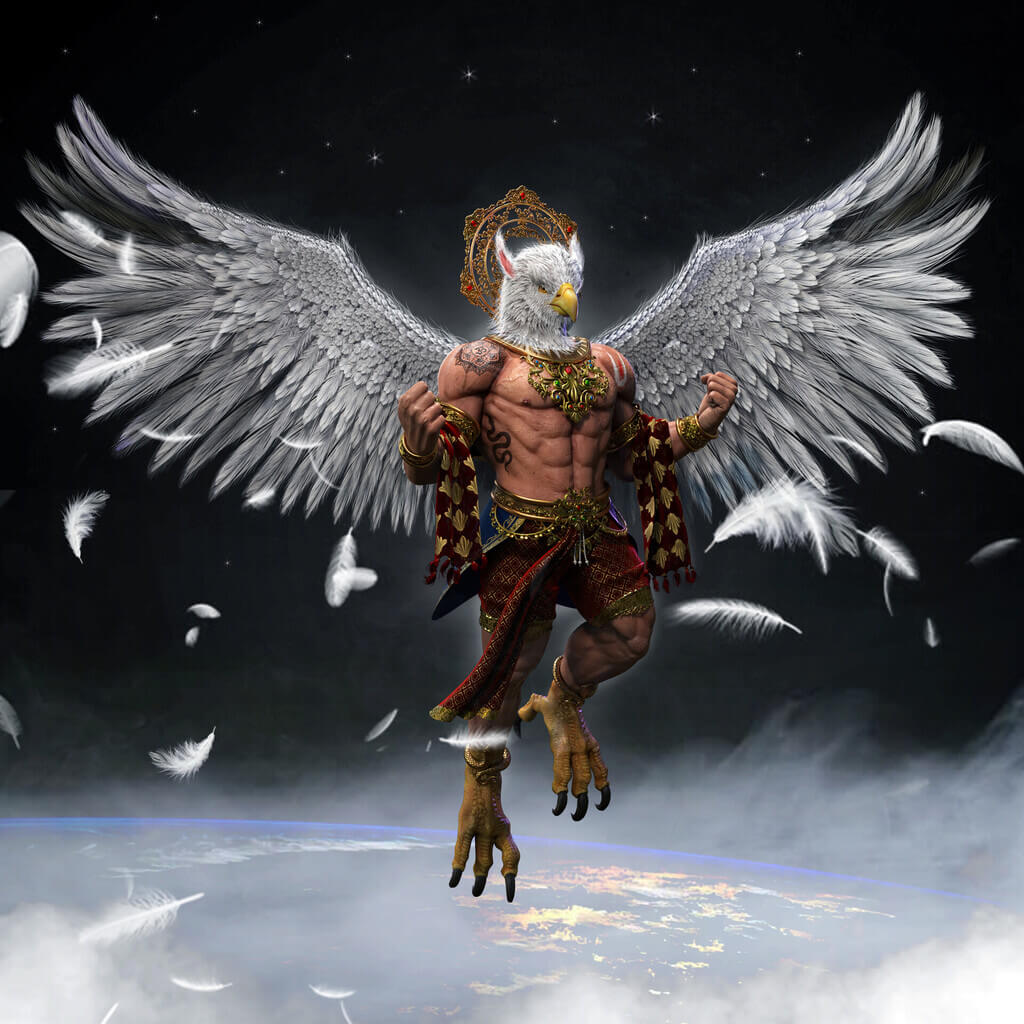
In Hindu mythology, the phoenix is known as the Garuda. In the Hindu scriptures, a giant bird is described which is the king of all birds. Garuda is also related to the Lord Vishnu, a Hindu God.
Garuda has a similar shape to the eagle. People believed this massive bird was associated with the sun and its protector against evil.
7. Phoenix in Slavic Mythology – Firebird
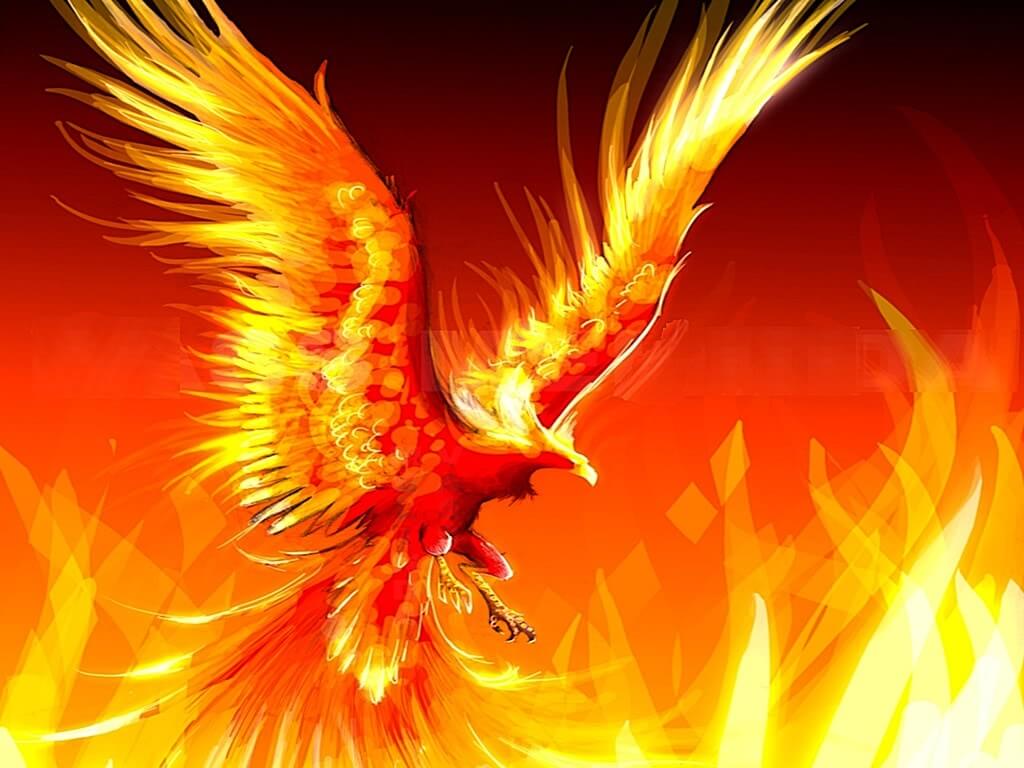
In Slavic mythology, people called the phoenix bird the firebird. This version of the phoenix bird is the symbol of fire and masculinity. However, there are some differences between the two birds, such as the depiction of both birds.
A firebird always burns himself into ashes every fall and is again reborn around the spring every year. This bird is also described as the giant falcon, which obviously doesn’t look like an eagle or peacock.
8. Phoenix in Ancient Rome Mythology
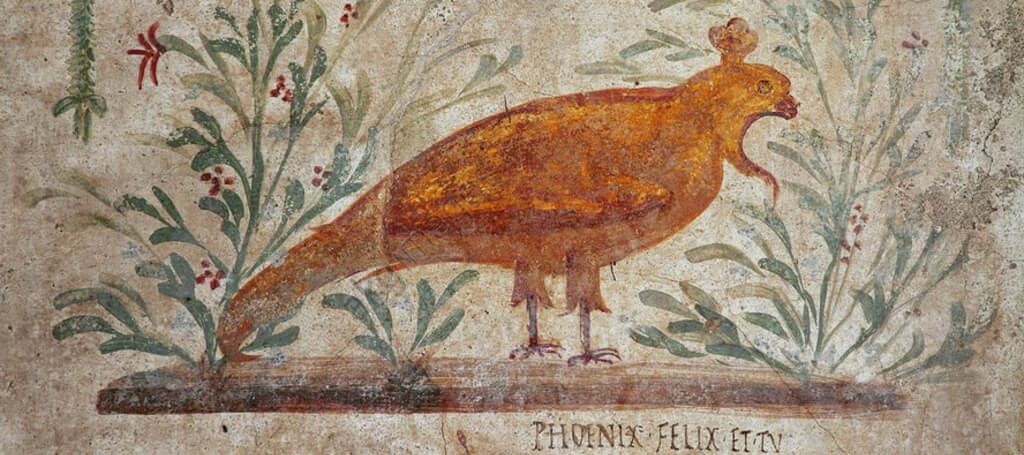
There are also numerous stories about the magical bird phoenix in ancient Rome mythology. Back then, people connected this bird to immortality. It is also the symbol of the everlasting reign of the Roman empire. After all, Rome was also known as the Eternal City. That’s why ancient Roman people have a phoenix as the apt symbol and they also put this on their coins.
There is one bizarre story related to a king and the real phoenix bird. Once there was a Roman emperor named Elagabalus who was obsessed with immortality. As the phoenix is connected with immortality, he wants to eat it.
9. Phoenix in Japanese Mythology – Ho-Oo (Hou-Ou)
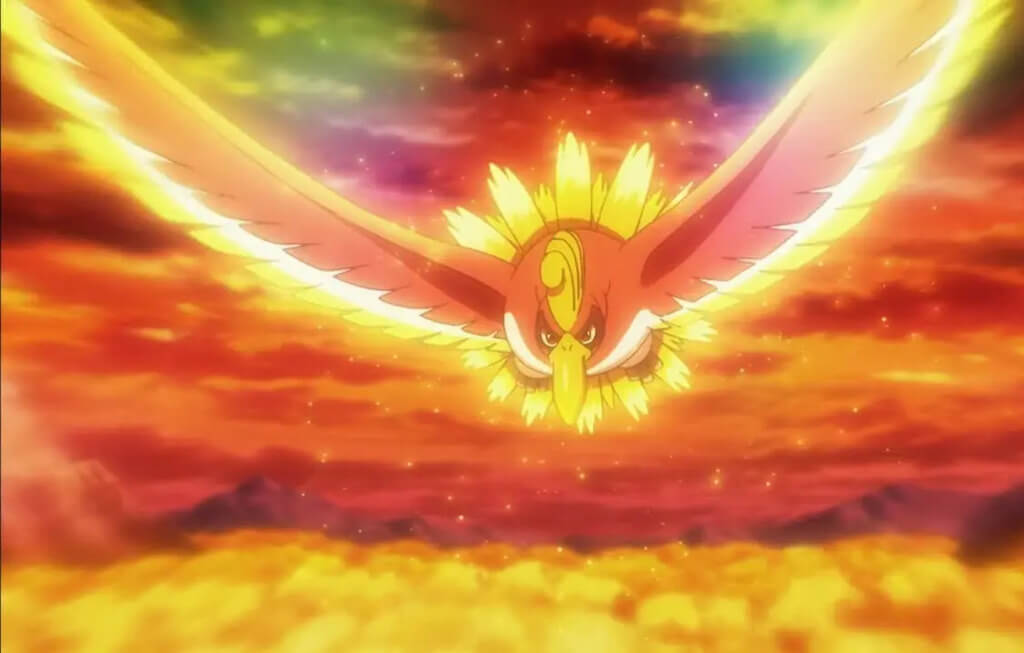
In Japanese mythology, the phoenix bird is known as Ho-Oo. It is said that it was first seen in the mid-6th century AD.
Ho-Oo (Hou-Ou) usually stays in its celestial home located in the sky and only comes to earth when a new era starts or a virtuous ruler is born on earth. This legendary bird is associated with Fidelity, Obedience, Justice, Empress, and the sun.
10. Phoenix in Chinese Mythology – Feng Huang
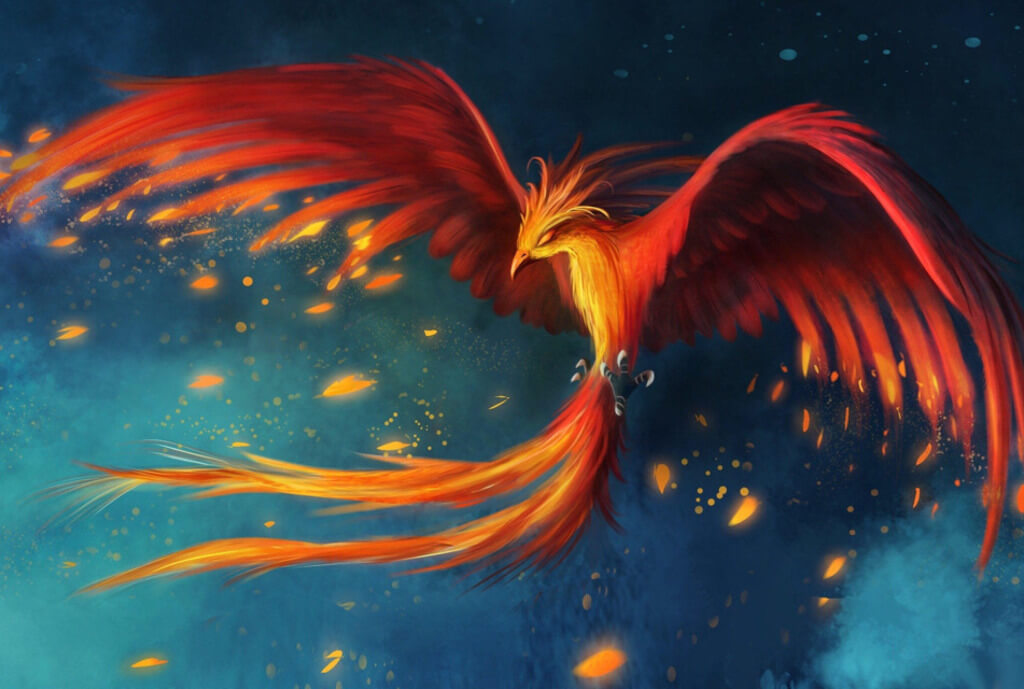
The Chinese depiction of the Phoenix Bird is Feng Huang, which represents yin and yang energy. The bird is also associated with grace, prosperity, power, and virtue.
The main difference between this bird and other phoenixes described in many cultures is that Feng Huang is a gentle creature who only eats dewdrops.
In Chinese mythology, Feng Huang is described as:
- It has the beak of a rooster but the face of a swallow.
- It has the neck of a snake but the breast of a goose.
- It has a tail like a fish.
- It has the backside of two animals, a tortoise, and a stag.
Phoenix in Popular Books
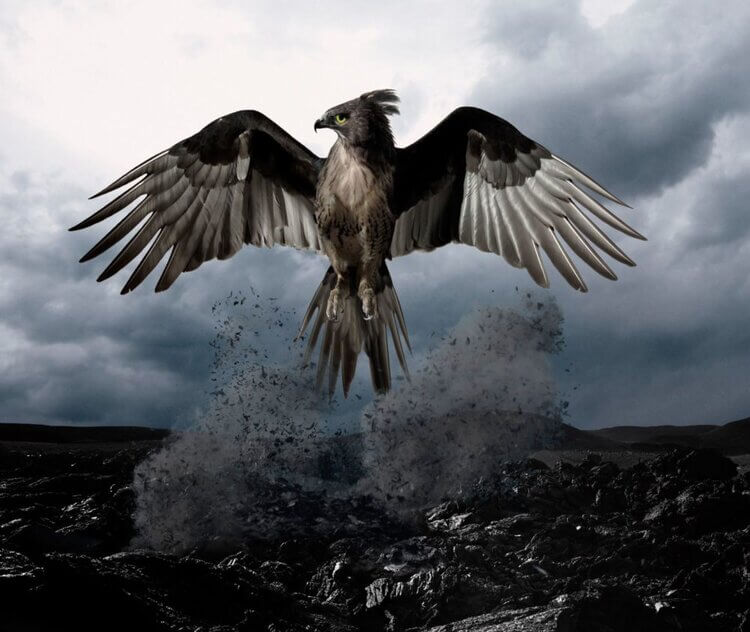
There are many books and movies in which there is a mention of this mythological or real phoenix bird. Here are some of the famous books:
- Harry Potter by JK Rowling: in this book series, the phoenix bird named Fawkes is shown as the faithful partner or spirit animal of Albus Dumbledore. The bird also helped the main character, Harry Potter, fight against evil.
- The Phoenix Bird: Another writer and author, Hans Christian Anderson, also mentioned the phoenix bird, which was born under the tree of good and evil in the Garden of Eden.
- In the religious book, Bible: There was also a mention of this bird in the bible as a Hol in Job 29:18, “I shall multiply my days as the Hol, the Phoenix.”
Fascinating Facts About Phoenix

Here are some more fascinating facts about the mythological bird phoenix:
- A phoenix never tried to run away from its death. It starts to burn itself down and will come crawling out from its ashes. Later this bird will become a more beautiful and powerful phoenix.
- Some legends claim that a phoenix can live more than 500 or 1000 years, which is around 97,200 years.
- When a phoenix is paired with the dragon, it symbolizes the Empress and the dragon represents the Emperor. That’s why only an Empress can wear the phoenix symbol, as it shows the power sent from the heavens.
- Phoenix is also connected with survival, strength, and patience. In some cultures, it is also associated with power and victory. That’s why it is seen on the flags and seals of the County and City of San Francisco and the City of Atlanta.
- In Japanese Mythology, the phoenix bird known as Ho-Oo is the symbol used for the royal family. It symbolizes justice, fidelity, and the sun. It is also used on many royal items, including lacquerware, mirrors, boxes, and textiles.
FAQs
Phoenix is a mythological bird that does not exist in reality. This bird is described based on many real birds, including the peacock, eagle, crane, and hawk.
If you see a phoenix in your dreams, consider yourself lucky. Phoenix is one of the most mysterious and powerful animals among the many mythological animals and birds.
The phoenix dream can symbolize many things, including transformation, rebirth, a new journey, and resurrection. It also signifies the fear of death, but you don’t have to worry because the phoenix, in fact, rises above after death. It rises from the ashes and becomes more powerful.
There are many spiritual meanings for the phoenix because it is associated with many things. The bird represents the cycle of life and death and the afterlife. It is also connected with faith, power, and fearlessness. The phoenix bird also symbolizes spiritual resilience.
There are many deep meanings behind a phoenix tattoo. This tattoo can be a symbol of freedom, survival, and strength. You can show the world that no matter how many failures you have been through, you will rise again as a phoenix bird rises from its ashes again and again.
The phoenix tattoo also means that you have a burning fire that will never go away, and you will keep fighting to achieve your goals and success. This eternal fire also shows that you have faith, love, and respect for people.
Final Thoughts: Real Phoenix Bird
So this is all about the real phoenix bird. Now you get the right answer to the questions: are phoenix real or not, and does the phoenix bird exist?
In various cultures and religions, a mythological bird is described in different forms, looks, and powers, but they are all connected to the real phoenix bird. This immortal bird has many magical powers which help heal and protect people from evil and bad things.
I hope this in-depth guide on the phoenix bird has given you all the required information about this unique and mystical bird. So, if you find this blog informative and interesting, please share it with your family and friends and let them know about this mythological bird.
Keep reading:











